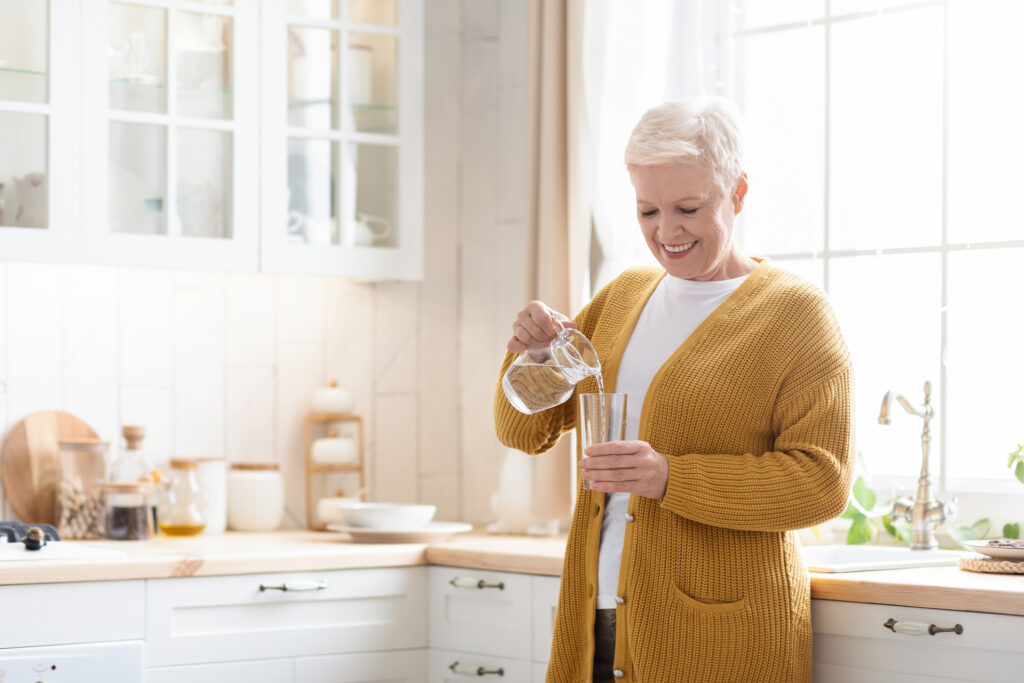Have you experienced bladder leaks? If you have, you are not alone. The involuntary release of urine from the bladder is called incontinence. This occurs more commonly in women than in men but it can happen to anyone.
Did you know over 50% of women have experienced incontinence, and about one-third of men? There are numerous causes, and it can vary in severity from mild and infrequent to regularly voiding a full bladder.
Women may experience incontinence due to menopausal changes, pregnancy, or childbirth. Men may experience incontinence due to prostate issues. Incontinence may also be a result of chronic conditions such as being overweight, Parkinson’s, Alzheimer’s, or diabetes.
Other causes include bladder or urinary tract infections (UTI), intake of bladder irritants such as alcohol or caffeine, or smoking. You may also experience “stress incontinence” where pressure on the bladder due to exercise, jumping, coughing, laughing or sneezing causes leakage.
It is important to understand the possible causes of your incontinence and which type of urinary incontinence you are experiencing. Talk to your physician about your symptoms so they can provide a diagnosis and work with you to find solutions that work for you.
Did you know that an enlarged prostate, bladder infections or UTI can affect your ability to empty your bladder fully, making you feel like you have urinary urgency even if your bladder is not full?
This is an overactive bladder and if there is no leakage, it is not considered incontinence. However, it is a signal that should not be ignored and requires medical attention to determine the underlying cause.
Addressing incontinence is vital to a person’s wellbeing. It can have many social consequences which limits activities and restricts where a person is willing to go. Experiencing incontinence does not mean you have to live with embarrassing accidents.
Lifestyle changes you can do to prevent and manage bladder leaks (incontinence):
- Pelvic floor exercises
A weakened pelvic floor is the most common cause of bladder leakage in women. Kegel exercises done regularly can help your pelvic floor get stronger. A Physiotherapist can help create a custom plan to strengthen your pelvic floor and improve your bladder leakage. - Drink on a regular schedule
You may want to limit your fluid intake if you have bladder leakage to help reduce the episodes. This is not advised and could lead to dehydration. Instead, drink a set amount of water throughout the day on a regular schedule instead of having a large amount of fluids at once. - Avoid bladder irritants
Certain drinks, foods and medications can stimulate the bladder and increase the volume of urine. Avoiding or reducing these can help reduce your bladder leakage. Avoid drinks and foods such as coffee and tea with caffeine, alcohol, acidic foods, and large doses of vitamin C. Speak with your Pharmacist about your medications and vitamins to see if any of them could be contributing. - Wear pads and underwear designed for bladder leakage
Many women are familiar with menstrual pads and will use these to help manage their bladder leakage. There are products specifically created for bladder leakage that are a better option. They are available as liners, pads and underwear that are comfortable and discreet to wear. Your pharmacist can help you find incontinence wear that will work for you.
Do not let incontinence limit what you do and your enjoyment of life. There are many options available to help you live your best life confidently. Talk to your PharmaChoice Pharmacist today.




